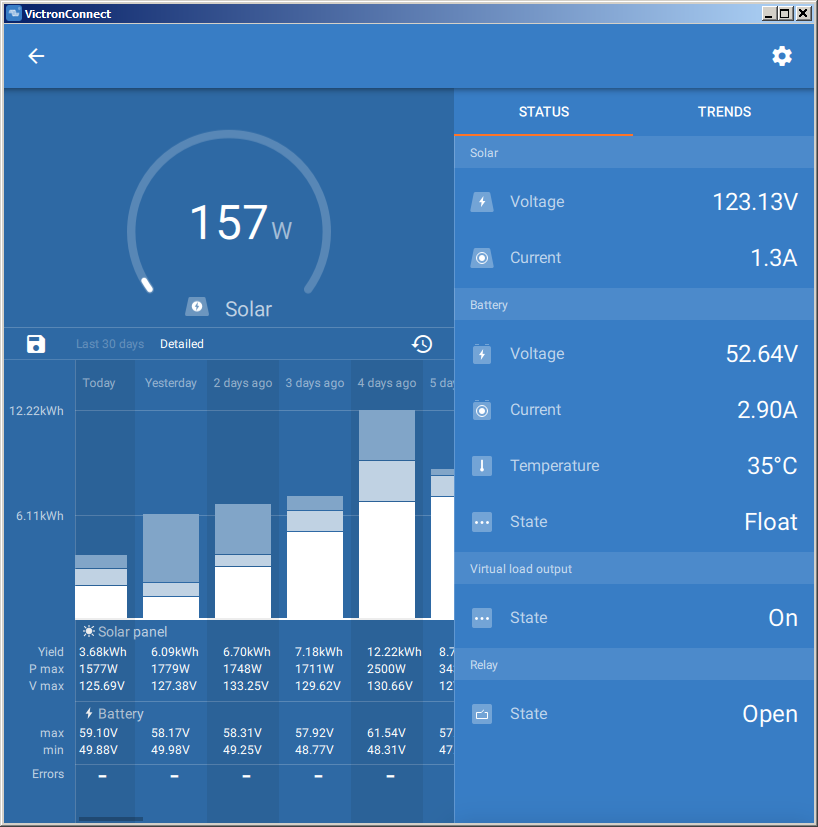Having trouble interpreting the output of VictronConnect
Components/parameters:
- Smart SCC 150/100
- Smart Battery Sense networked with SCC
- Quattro 5K/48
- Color Control GX
- 48V Trojan battery bank, 58.8V absorption
Remote monitoring via VRM, VictronConnect on PC.
Trojan says -5mV/°C/cell
24 cells
24*5 = -120mV/°C
I can directly see the Smart Sense when local and able to access it on bluetooth. I do not see that I have a way to access it directly via VRM.
I entered -120mV/°C in temperature while it was at the uncompensated absorption level. Voltage immediately increased about 1V as expected based on 34°C, and it didn't seem to be adjusting current to lower it. Shocked me a bit, so I flipped the sign and immediately saw a lower voltage. Head melted, and I just turned it off.
Questions:
- Does temperature compensation adjust the measured voltage and make it read higher for °C above 25°C?
- If #1 yes, had I been patient and given the SCC more time, would I have seen the current reduce and the voltage settle to the absorption voltage?
- When I connect to the SCC, is the temperature reported in the app/PC VictronConnect (PC version shown below) from the networked smart sense or the SCC internal temp?
- If not the smart sense, is there a way I can see the smart sense via VRM?

Thanks!
